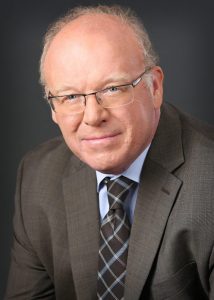In a recent webinar, Kim Stelson, Director of the Center for Compact and Efficient Fluid Power, reviewed the operations, accomplishments and vision of the CCEFP. Here are some of his comments about current activities and an upbeat assessment of future prospects.
“The state of our Center is strong and, in fact, we’ve moved from a situation of great uncertainty about a year ago, to a situation where I’m quite confident,” said Stelson. “We know where our direction is, and I’m sure we’re going to succeed.

Kim Stelson directs the Center for Compact and Efficient Fluid Power and is a professor at the University of Minnesota.
“On a day to day basis, it doesn’t look like there’s any change,” he said. But if one considers the progress over the last decade, there’s actually been a great deal of change—although he admits there is still a lot of work to do.
“Just to review, the mission of the Center is changing the way fluid power is researched, applied, and taught. That’s constantly been our mission. Our vision is that fluid power is the technology of choice for power generation, transmission, storage and motion control. We do this in four ways. First of all, we work on improving existing applications. Secondly, we work on creating new markets. We do this in close partnership with industry, and we educate the next generation of technology leaders for fluid power.”
The CCEFP began in in 2006 with funding from the National Science Foundation supporting work at several universities. Since then, the Center has expanded the academic network involving a number of additional universities by funding research and holding summits. “What we’re trying to do is generate a nationwide network in every important geographic region where there are universities actively doing fluid power research and education,” said Stelson.
One recent example of outreach to a university, he explained, involves the University of Kentucky. “One of the big interests on the part of the industry is noise and vibration.” While important, the CCEFP itself doesn’t have sufficient resources to fund noise research in a generic sense. “We decided within the Center to restrict ourselves to noise problems that are specific to fluid power, to hydraulics and pneumatics.” This makes a lot of sense, he continued, because the UK College of Engineering runs a leading vibro-acoustics industry consortium. Instead of trying to directly support this kind of research, the Center is partnering with the consortium and encouraging its industry members to consider joining the UK group—which would benefit both entities.
Since its founding the Center has attracted sizeable sums, including a $40 million investment from the National Science Foundation, $8 million from universities and matching funds, $7 million from industry and membership fees, and $25 million from individual projects that faculty have been leading in fluid power.
“We have created a direct hands-on experience in fluid power research for over 1,000 university students. We’ve surveyed the graduates of our program, and two-thirds of them are working in fluid power. Also, in the classroom, over 1,400 undergraduates per year have been exposed to fluid power in various courses and labs. That’s a total of about 15,000 students over the life of the center. Additionally, we offer a MOOC, a massive online open course, which gives about 8,000 students per year an exposure to fluid power. This course is free, it’s open to anyone. We have students from all continents except Antarctica, and we have many people in industry who take this to learn about fluid power, so that’s been a really important thing.
“We have greatly raised the awareness about fluid power in the government by visiting agencies such as the National Science Foundation, NIST, DOE, DOD, and also Congress. We have created a comprehensive fluid power research strategy that is the model for the world. That’s a great deal of accomplishment, when you take the long view.
“We’ve recently undergone a transformation in our organization,” Stelson continued. Previously, the Center partnered with the Pascal Society (part of the NFPA Education and Technology Foundation) to directly support pre-competitive fluid power research with pooled industry donations.
Now, to increase its impact, CCEFP will become an independent, free-standing organization beginning July 1. “We will utilize the pooled industry support to fund targeted research projects and help with the administration. We will also use some of the funds to maintain the core administration that focuses on indirectly supporting pre-competitive fluid power research by creating new government funding opportunities. We expect it to support many more projects than if we just funded our research directly.
“We also organize events, conferences, and communication necessary to maintain the fluid power academic industry consortium, which is so important. I find these networking events are really essential. The rationale for revising the strategy, if we’re unable to directly fund a significant number of research projects and administration, we just don’t have the resources to do everything we’d like to do directly. We do have the ability to obtain significantly greater funding from government agencies. We have the credentials, network, and experience to succeed to this strategy. We are succeeding,” Stelson emphasized.
CCEFP’s government funded research directions are divided into three areas: off-highway vehicles, led by Zongxuan Sun at the Univ. of Minnesota; human scale systems, led by Eric Barth at Vanderbilt; and fluid power manufacturing, led by Tequila Harris at Georgia Tech. We’ll take a closer look at these three areas in upcoming Fluid Power World blogs.
CCEFP
www.ccefp.org
Filed Under: News